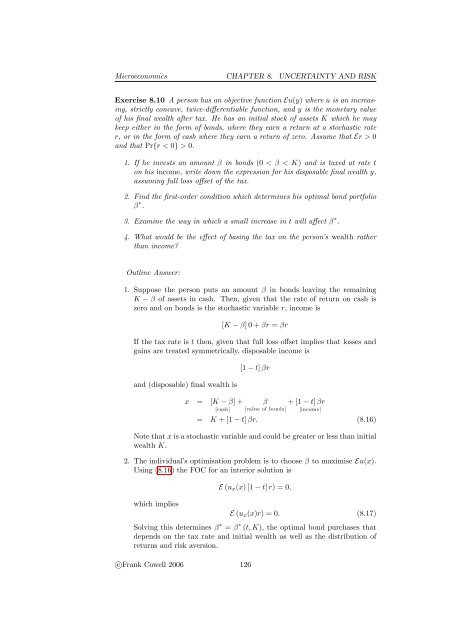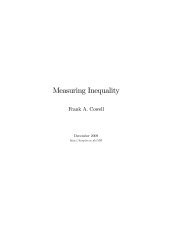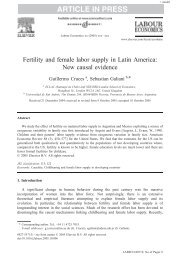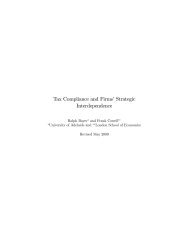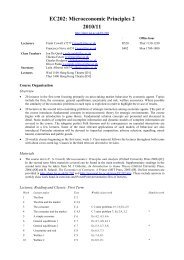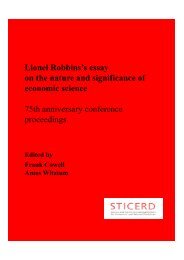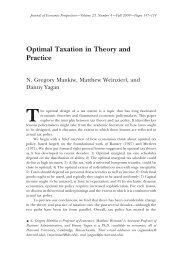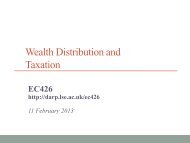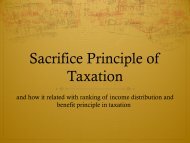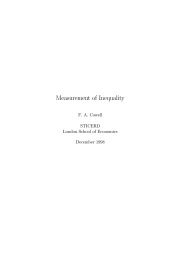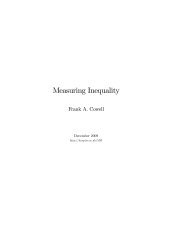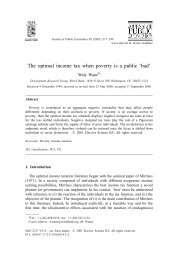Uncertainty and Risk - DARP
Uncertainty and Risk - DARP
Uncertainty and Risk - DARP
You also want an ePaper? Increase the reach of your titles
YUMPU automatically turns print PDFs into web optimized ePapers that Google loves.
Microeconomics CHAPTER 8. UNCERTAINTY AND RISK<br />
Exercise 8.10 A person has an objective function Eu(y) where u is an increasing,<br />
strictly concave, twice-di¤erentiable function, <strong>and</strong> y is the monetary value<br />
of his …nal wealth after tax. He has an initial stock of assets K which he may<br />
keep either in the form of bonds, where they earn a return at a stochastic rate<br />
r, or in the form of cash where they earn a return of zero. Assume that Er > 0<br />
<strong>and</strong> that Prfr < 0g > 0.<br />
1. If he invests an amount in bonds (0 < < K) <strong>and</strong> is taxed at rate t<br />
on his income, write down the expression for his disposable …nal wealth y,<br />
assuming full loss o¤set of the tax.<br />
2. Find the …rst-order condition which determines his optimal bond portfolio<br />
.<br />
3. Examine the way in which a small increase in t will a¤ect .<br />
4. What would be the e¤ect of basing the tax on the person’s wealth rather<br />
than income?<br />
Outline Answer:<br />
1. Suppose the person puts an amount in bonds leaving the remaining<br />
K of assets in cash. Then, given that the rate of return on cash is<br />
zero <strong>and</strong> on bonds is the stochastic variable r, income is<br />
[K ] 0 + r = r<br />
If the tax rate is t then, given that full loss o¤set implies that losses <strong>and</strong><br />
gains are treated symmetrically, disposable income is<br />
<strong>and</strong> (disposable) …nal wealth is<br />
[1 t] r<br />
x = [K ] + + [1 t] r<br />
[cash] [value of bonds] [income]<br />
= K + [1 t] r: (8.16)<br />
Note that x is a stochastic variable <strong>and</strong> could be greater or less than initial<br />
wealth K.<br />
2. The individual’s optimisation problem is to choose to maximise Eu(x).<br />
Using (8.16) the FOC for an interior solution is<br />
which implies<br />
E (u x (x) [1 t] r) = 0;<br />
E (u x (x)r) = 0: (8.17)<br />
Solving this determines = (t; K), the optimal bond purchases that<br />
depends on the tax rate <strong>and</strong> initial wealth as well as the distribution of<br />
returns <strong>and</strong> risk aversion.<br />
cFrank Cowell 2006 126


